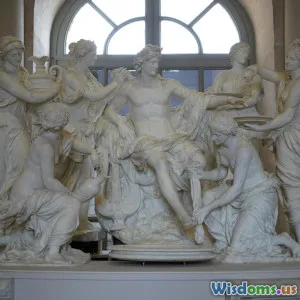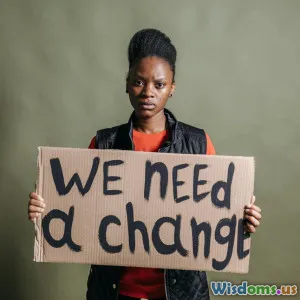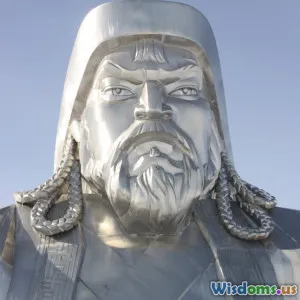
History's Overlooked Trailblazers
8 min read Discover the untold stories of history's overlooked trailblazers who changed the world but remain unsung. (0 Reviews)
History's Overlooked Trailblazers
History often celebrates towering figures—the well-known leaders, inventors, and thinkers whose names are etched in textbooks and monuments. Yet, beneath these towering giants lie countless trailblazers whose invaluable contributions remain shrouded in obscurity. These overlooked pioneers paved the way for progress, breaking boundaries in science, civil rights, art, and social reform. This article shines a light on their stories, offering a fresh perspective that broadens our understanding of history’s true architects.
Introduction: The Shadows in History’s Spotlight
Most of us recognize names like Marie Curie, Martin Luther King Jr., or Leonardo da Vinci. However, history's rich tapestry is thread with figures who challenged norms and sparked transformations but whose names do not echo through classrooms or popular media. This neglect stems from historical biases—whether based on gender, race, or geography—or simply the caprice of what record-keepers deemed noteworthy.
Uncovering these trailblazers isn't merely an academic exercise; it calls on us to appreciate the complexity of innovation and progress, fostering inclusivity in how we tell our collective story. Recognizing these trailblazers inspires today's generations, proving that change is possible even when the world overlooks you.
Reclaiming Lost Voices: A Closer Look at Forgotten Heroes
1. Sarah Boone: Revolutionizing Household Labor
When we think of inventors, the narrative typically centers on men and industrial machinery. Sarah Boone, an African American woman of the 19th century, holds one of the earliest patents for improving the ironing board in 1892. Her design enhanced the efficiency of ironing women's garments, a revolutionary adaptation tailored to the pressing needs of contemporary dresses and sleeves.
Despite her innovation's practical significance, Boone was not broadly acknowledged, illustrating the era's intersectional discrimination. Today, her patent symbolizes the critical role of marginalized inventors who transformed domestic life.
2. Ignaz Semmelweis: The Pioneer of Hand Hygiene
In 1847, Hungarian physician Ignaz Semmelweis discovered the crucial practice of handwashing to prevent puerperal fever. His insistence that doctors wash hands in chlorinated lime solutions plummeted mortality rates in maternity wards. Yet, peers ostracized him, and his ideas were initially rejected due to resistance within the medical community.
Only decades later did antiseptic protocols become standard practice. Semmelweis’s experience underscores how groundbreaking ideas often confront institutional inertia before acceptance.
3. Wangari Maathai: Green Belt and Green Legacy
Kenyan environmentalist and political activist Wangari Maathai, founder of the Green Belt Movement, empowered millions through reforestation projects and championed women's rights. Awarded the Nobel Peace Prize in 2004, her blend of environmental conservation and social justice predated much of today’s sustainability discourse.
Despite her profound influence, Maathai’s name is less recognized globally compared to contemporaries. Her work offers a blueprint for integrated activism.
4. Noor Inayat Khan: The Silent Spy of WWII
An Indian Muslim woman working as a British SOE agent during World War II, Noor Inayat Khan’s courageous espionage behind enemy lines was instrumental in the Allied efforts. Operating under the codename “Madeleine,” her silent defiance and eventual martyrdom in Dachau concentration camp remain poignant symbols of bravery.
Historically overshadowed by male military heroes, Khan’s story challenges conventional wartime gender roles and emphasizes diverse contributions to victory.
5. Henrietta Lacks: The Cell That Changed Medicine
Not a conventional trailblazer in action but through her immortal cells, Henrietta Lacks unknowingly fueled enormous medical breakthroughs. Cells from her cervical tumor, taken without consent in 1951, led to countless advancements in vaccines, cancer research, and gene mapping.
Lacks’s case raises enduring ethical questions about consent and medical research equity while affirming her profound impact on science.
Why Do Trailblazers Get Overlooked?
Several systemic factors contribute to the erasure or minimization of these figures:
-
Social and Cultural Biases: Dominant groups historically controlled which narratives were preserved. Women, minorities, and colonized peoples’ contributions were frequently minimized to reinforce societal hierarchies.
-
Institutional Gatekeeping: Academic, political, and scientific institutions often resisted disruptive ideas, sidelining innovators who challenged prevailing paradigms.
-
Documentation Gaps: The absence of recorded evidence or deliberate destruction of records contributed to obscurity.
These challenges continue to influence how history is taught and understood, underscoring the need for continuous revision and inclusivity.
Lessons from Overlooked Trailblazers
Their stories collectively teach invaluable lessons:
-
Resilience Amid Rejection: Figures like Semmelweis and Khan endured ridicule, ostracism, or worse yet persisted bravely.
-
Intersectionality Matters: Recognizing multiple identity dimensions i.e., race, gender, class, helps to understand barriers and achievements.
-
Legacy Is Multifaceted: Impact is both tangible (inventions, environmental restoration) and intangible (inspiration, ethical considerations).
This expanded lens encourages society to celebrate diverse contributions and promotes a more nuanced understanding of progress.
Conclusion: Embracing a Richer Historical Narrative
As we commemorate history's familiar heroes, we must also give voice to the overlooked trailblazers whose grit, courage, and creativity shaped our world. By acknowledging their struggles and triumphs, we reclaim a fuller, richer heritage that honors all who have advanced humanity. Their stories foster empathy and inspire future innovators to pursue impact, no matter how daunting the odds.
History is not static—it is a living dialogue, continually rewritten as new voices emerge from the shadows. The legacy of overlooked trailblazers beckons us to listen deeply, seek inclusivity, and recognize that every step forward has multiple authors.
Let their narratives illuminate paths yet unexplored, and their persistence ignite your own journey toward change.
References
- “Women Inventors: Sarah Boone’s Patent,” United States Patent Office Archives.
- Loudon, I. (1994). Ignaz Semmelweis and the birth of infection control. The Lancet.
- Maathai, W. (2006). Unbowed: A Memoir. Knopf.
- Binney, M. (1990). Noor Inayat Khan: British Intelligence Heroine. Spy History Quarterly.
- Skloot, R. (2010). The Immortal Life of Henrietta Lacks. Crown Publishing.
Rate the Post
User Reviews
Popular Posts
















